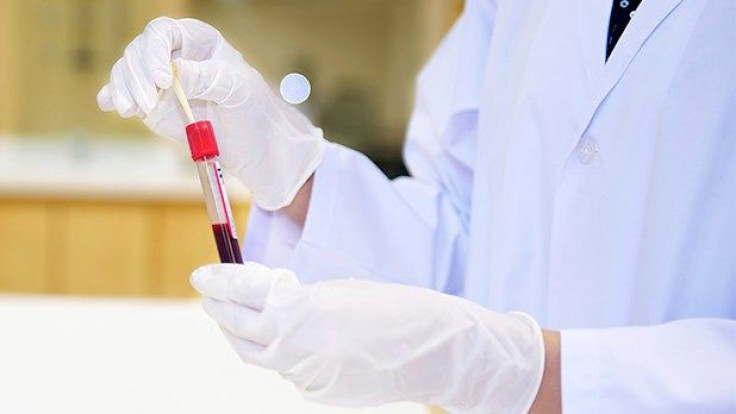Australian women demand Turnbull government to keep Pap smears and pathology services free

Australian women are criticising the Federal government’s plan to cut bulk-billing incentives for pathology and diagnostic imaging services, including pap smears.
From July 1, pathology services will no longer be free, following December’s budget update announcement – a plan by the Turnbull government to save $640 million over the course of four years.
“Last financial year, the Commonwealth spent $99 million to encourage diagnostic imaging and pathology providers to bulk bill patients for their services. We’ve been spending roughly the same amount every year since 2009 but have seen next to no increase in bulk billing rates, so now we want to do something more productive with that money and do it inside the health budget,” Minister for Health Sussan Ley told the International Business Times Australia.
“All we are doing is removing an incentive to providers, which wasn’t working. Rebates to patients will remain the same for every single pathology item.
“Diagnostic imaging and pathology providers receive more than $5.68 billion dollars ($3.13 billion in diagnostic imaging and $2.55 billion in pathology) every year in Medicare pathology benefits. This equates to around 28 percent of total benefits paid under Medicare. On top of this, we also pay for collecting and managing specimens and associated administration costs. That was another $214 million last year. Both these payments will continue as they should.”
Although the Health Minister recently came under fire for stating that Australians should be suspicious of pathologists’ estimates of how much patients would have to pay for pathology services, pathology providers have said they will pass on any losses to Australian patients through a co-payment.
While this may mean a slight inconvenience for some Australian women, the cuts are expected to hit the sickest and poorest Australians the hardest.

“It’s more than just some cuts to Medicare by the government,” Medical student Remaliah King told IBTimes. “Companies that administer these pathology services have threatened to reduce their bulk billing . . . if the government introduces this legislation and forces them to take a hit in profits from Medicare rebates
“I think this is problematic on several different levels, and we the users of the public health system are suffering from a lack of transparency.”
The budget cuts will make patients pay at least $30 for a Pap smear, blood or urine test, according to the Royal College of Pathologists of Australasia president Michael Harrison.
Australians will have to pay a minimum of $85 for a mammogram, and up to $93 for an X-ray, $186 for an ultrasound and $396 for a cat scan, according to the Australian Diagnostic Imaging Association (ADIA).
The upfront cost of a PET scan could reach $1,000.
“This is wrong on so many levels but primarily it is a tax on the female gender. Many women already put their health last, now they will just have another reason to not go to the doctors for regular check-ups,” 37-year-old breast cancer survivor Lorraine Johnson told IBTimes.
Johnson was diagnosed with Ductal carcinoma in situ (DCIS) breast cancer in 2014. This was discovered at her biannual Pap smear and breast cancer check up.
“I was aged 36 and had young children, the youngest being only 6 months old. If I had to pay for my Pap smear, I probably wouldn’t have had the check which means I highly likely would have been, at the very least, gravely ill now.”
Although Johnson is a breast cancer survivor, she still has a high risk of contracting cervical cancer.
“I require regular tests to be done which includes mammograms and ultrasounds. I’m already having to pay out for these at the rate of around $500 per year. I need to maintain having my regular Pap smears. If I had to pay for my Pap smears, I would be financially ruined in health depth. Why should I have to pay for regular health checks just because of my gender?”
This ringing question about the impact the changes will have on women is the driving force behind a petition started by Sydney student Brigitte Garozzo to keep pap smears and pathology services free.
To date, 190,523 people have signed the petition demanding the Liberal government scrap the policy.
“These cuts are unfair to the average Australia, but will especially hurt women. Free and accessible pathology tests are key to ensuring early detection of cervical cancer, STI’s, UTI’s and pregnancy. Late detection will lead to more cost to the taxpayer in the long run. These essential services are a backbone of our world class healthcare system,” Garozzo said.
Garazzo, King and Johnson aren’t the only Australian women vocal about the government’s move either. On February 20, rallies will be held across Australia in Sydney, Newcastle, Melbourne, Adelaide, Perth, Brisbane and Canberra to protest against these healthcare cuts.
“If the level of services that can be bulk billed decreases, I would be very worried I would not be able to afford these essential services,” said Remaliah King.
King, a medical student who also suffers from various chronic conditions, is worried about what the cuts might mean for her future.
“I rely on pathology and radiology on a sometimes weekly basis to monitor my health and to search for some cues about how to treat my conditions. I saw a figure printed that an MRI could cost up to $173. If it wasn’t bulk billed, the cost for that service is $403.20. I should know – I had an MRI the other week. I also had X-rays done, full cost is $256.90,” she said.
“If levels of services that can be bulk billed decreases, I would be very worried. I would not be able to afford these essential services. I’m a young student, I currently cannot work due to my health and I’m already struggling to pay for the specialist medical services I need.”
King, who aims to work within disadvantaged communities that currently do not receive a great standard of healthcare, is also worried about her future patients.
“If this has a lasting impact it could further the disparity in health outcomes – which will in turn increase the burden of disease on the healthcare system.Patients with chronic conditions including autoimmune diseases and cancers also rely on these services as part of effective treatment and monitoring.
“There is furthermore proven decline in the utilisation of health services when a financial commitment is requirement, however small it may be.”
King wants the Liberal government to ensure that they work with pathology and radiology providers to ensure the bulk of services remain free for patients.
Limited dollars must be well-spent: Ley
But Minister for Health, Sussan Ley, is clear about the rationale behind the cuts:
“My job as Health Minister is to direct our precious health dollar taxpayers’ money – to where it is best spent. I’ve said many times we want Australia’s health system to remain world leading, people focused and affordable to both patient and taxpayer. We can only achieve this by directing the public health dollar where it does the most good.”
According to News.com.au, these bulk bill cuts will fund $1 billion for a new treatment for hepatitis C. Health Minister Sussan Ley also confirmed that pathology and radiology cuts will allow the government to fund four new treatments for recovering drug addicts and prisoners.
According to the publication, Medical Association president Dr Brian Owler welcomed the funding for the new treatments of hepatitis C, but believed it was wrong of the government to cut funding for pathology services to fund one specific treatment.
“We desperately need a new injection of funds into treating hepatitis C and to subsidise effective medication to financially viable level,” King added. “However, some health practitioners are wary about the lack of information about what this new funding exactly entails. Overall improving our funding of Hepatitis C programs is very important, but this shouldn’t come at the cost of our existing healthcare infrastructure.”
Meanwhile, Johnson said she preferred the money to be spent on women’s health services and making the necessary monitoring checks for women cheaper.
“It is no good offering free checkups for women pre-diagnosis and then charging them the earth after diagnosis, as these checks are more vital than ever after diagnosis. But I suppose the most important message here is that Pap smears saves lives.”






